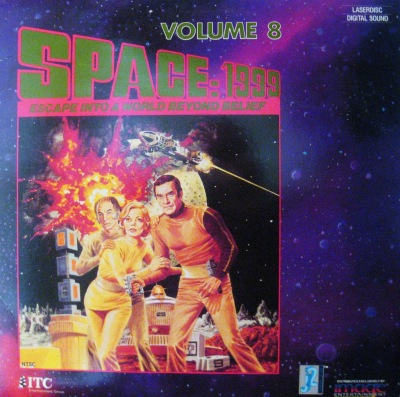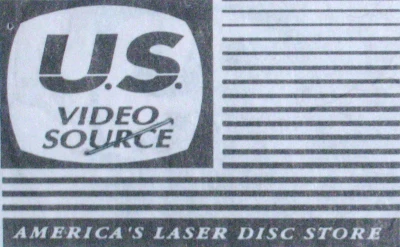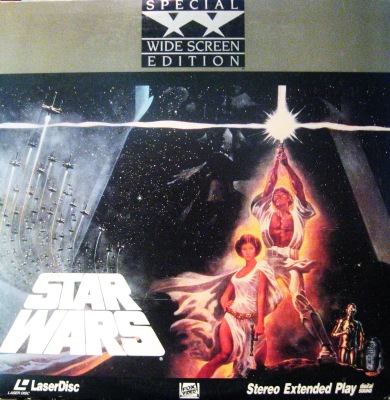As a child growing up in suburban New Jersey of the mid-1970s, there was probably nothing more exciting than a (long…) family day at the amusement park called Great Adventure. The park yet endures — in Jackson, New Jersey — and for many years it has existed under the corporate umbrella of Six Flags.
But the Great Adventure I remember so well – from my first visit, as a kid of seven or so — came before that particular era began.
The original Great Adventure park was imagined, designed and built by businessman and show-man extraordinaire, Warner Le Roy (1935 – 2001), whom The New York Times once termed the city’s “mad genius.”
Mr. Le Roy was a successful restaurant-owner and son of an early generation of Hollywood moguls. With Great Adventure — which opened its doors on July 1, 1974 — this entrepreneur imagined a colossal, one-stop entertainment facility for all tastes. His park – carved out of beautiful forest land, but not obtrusively so – would feature a safari, stage shows of all types, roller-coasters, and even a campground. The park was nicknamed “the Enchanted Forest.”
The first time I visited Great Adventure with my Mom and Dad and sister, it must have been circa 1976 or 1977. I’m not certain of the exact date. But I was a little kid, it was summer, and I remember we got up when it was still dark, probably before 5:00 am, packed a picnic lunch, and then drove for what seemed like an eternity to reach the park. At this point in my life, I hadn’t yet visited Disney World (that happened in 1979…during a hurricane), so I had never seen anything like the Great Adventure amusement park.
We drove our car through the safari first, and it was a crazy experience. Animals would walk up freely to the cars and get very…friendly. I remember monkeys jumped on the roof of our car and stayed there for a while, and an ostrich stuck its beak in my mother’s window, scaring the living daylights out of her. It was great fun. But this safari was just prologue. The amusement park was the main event.
As I recall, you entered Great Adventure through a big gate, and walked an old-fashioned main street shopping venue where you could buy overpriced souvenirs. And – on all sides – were attractions of unbelievable size, color and scale.
There was the great Ferris Wheel for instance, and from atop it, you could spy the vast expanse of the park.
There was the famous Carousel, built in 1881 but then (and now) occupying land at GA.
 There was the Runaway Mine Train, a great roller coaster (above a small pond if memory serves…) in the Old West portion of the park.
There was the Runaway Mine Train, a great roller coaster (above a small pond if memory serves…) in the Old West portion of the park.
And then there was my personal favorite: the Enterprise. The Enterprise was not a traditional roller coaster, but a great wheel of cars that circled vertically, over and over again, at what seemed like high warp speeds. I think this was also my father’s favorite ride.
Another unforgettable attraction at Great Adventure was the Moon Flume, or Hydro Flume, a log flume with space age trappings, and which always had long, long lines. Even at that age, I preferred the future to the past, and always preferred the Moon Flume, with its futuristic look, to the Old West’s log flume, at the other end of the park.
Over the years, my family returned to Great Adventure probably five or six times, as new attractions were developed and added.
Soon came Lightning Loops, a ride where you traveled a loop heading forward, and then reversed course and went through it backwards…very fast.
Not long after, the park also introduced Rolling Thunder, which at that time was the largest, most frightening roller-coaster I had ever seen. It was an absolute Goliath.
As the eighties came and went, Great Adventure added attractions like “Free Fall,” which I thought would stop my heart the one time I rode it, but the park also faced some bad publicity involving a fire in a haunted house attraction, and a tragic death on Lightning Loops.
My last visit to the park was early in the summer of 1990, when I went to the park with my then-girlfriend, now-wife, Kathryn. She got sick on one of the rides, and didn’t have a great day. The magic was gone, in part because I had now grown up, and it was time to move on. We would soon be moving to North Carolina and beginning a life together.
Still, I’ll always cherish the memories of that first, spectacular, magical summer day in the age of Jimmy Carter, disco and the bicentennial. I can still feel the excitement and anticipation during the car ride to the park and during a marathon day spent on the rides. We rode one ride after the other after the other, stopping only to see shows and eat our packed lunch of submarine sandwiches, Coke, and potato chips. The day lasted till well-after dark, till the thick of the night.
I recollect, too, riding Great Adventure’s Sky Ride, and looking out across the lighted entertainment metropolis: a vast land of attractions interspersed with lakes and beautiful trees. I remember feeling dog tired, and still not wanting the day to end, hoping against hope that the “great adventure” would never end. When I finally returned to the car, I fell instantly into a deep slumber…and the whole day felt like a dream
Could such a magical place really have existed?
To a child, the 1970s Great Adventure was indeed a dream come true. I suspect that if I went back to the same park today, I wouldn’t recognize many of the rides or shows or attractions. Besides, if I really had the urge to visit a modern amusement park, there’s one nearby me called Carowinds. I could just go to that one. But in neither case, would it be the same. I’m reminded of Rod Serling dialogue from The Twilight Zone episode “Walking Distance” — “Maybe there’s only one summer to every customer.“ If that’s the case, I’m fortunate that mine, at GA, was so very, very happy.
In a few years if not sooner, my five year-old son Joel will be ready for his first amusement park. It’ll be his summer, and I can’t wait for it to start. I trust I won’t be too old to ride the roller coasters and feel, at least a little, like a kid at Great Adventure again. All aboard the Log Flume!
You can read more about Great Adventure and its long history here.
 Once upon a time, I was certain that the future of home entertainment media belonged to the laserdisc format.
Once upon a time, I was certain that the future of home entertainment media belonged to the laserdisc format.  Laserdiscs were wonderful as well, for their capacity to navigate frame-by-frame (in CAV mode, anyway). They could also feature a host of extras outside the film itself, both on the discs and on the over-sized, record album-like packaging. The laserdisc for Aliens (1986) and The Abyss (1989), for instance, featured extended cuts of the film.
Laserdiscs were wonderful as well, for their capacity to navigate frame-by-frame (in CAV mode, anyway). They could also feature a host of extras outside the film itself, both on the discs and on the over-sized, record album-like packaging. The laserdisc for Aliens (1986) and The Abyss (1989), for instance, featured extended cuts of the film. 












































